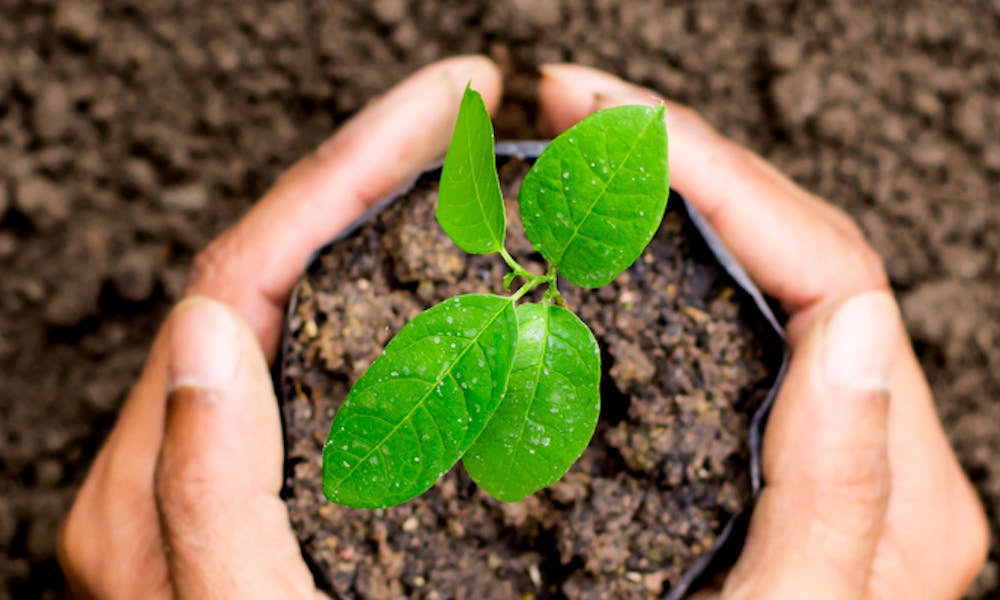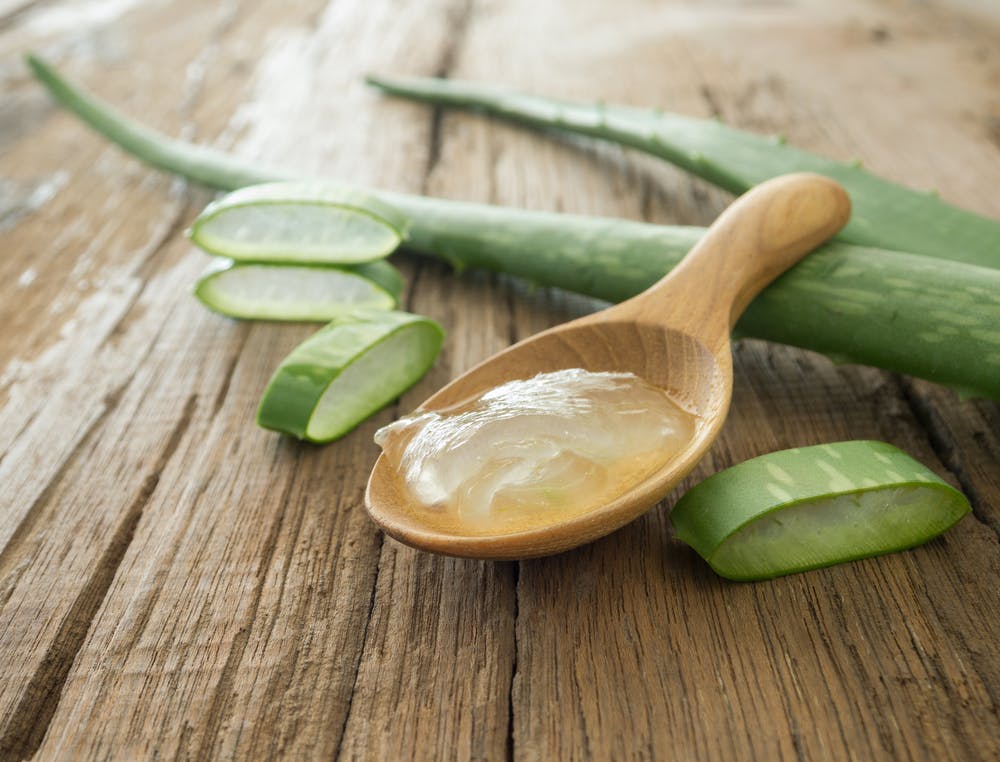MENU
7 medicinal plants that you can grow at home

For thousands of years civilisation has been using plants to try and cure their illnesses. Whilst some of these ideas could be dismissed as old wives tales, many of their medicinal techniques were very successful. Before modern medicine, medicinal plants were all they had to improve their health. Did you know that garlic isn’t just useful for making delicious cheesy garlic bread, but can also be used to help get rid of fevers and infections?
As well as helping you to live a healthier life, these medicinal plants can be used to decorate and add a touch of nature to your home.
Read on to find out more about medicinal plants that you can grow easily in your own home.
7 medicinal plants that you can grow at home
ALOE VERA
Properties
This plant stands out especially for its healing properties, ideal for hydrating and taking care of the skin. The gelatine within its leaves is a natural coolant for burns, irritations and insect bites and provides refreshing relief. With an aloe vera plant in your house there is no need to buy aftersun, this stuff is much more effective and cheaper!
Furthermore, if you cultivate aloe vera, you will have the opportunity to produce homemade body care products. Examples of such products are aloe vera cream for stretch marks and face masks amongst others. Look here for 40 different uses of this amazing plant!
How to grow it
Aloe vera is one of the easiest plants there is to maintain, as it doesn’t require a huge amount of care once planted. It does however need a temperate climate where there isn’t going to be drastic changes in the temperature. It reproduces through “children” growing around the “mother” plant. You should plant your aloe vera in a pot and fill this up with soil up to the point where its leaves start to grow. Your aloe vera will need a touch of fertilizer to keep growing, which must be organic.

BASIL
Properties
Thanks to its smell and soft aromatic flavour this plant is a great addition to any meal. Most people would think that basil’s use ends here but they would be wrong, basil is a magic herb. Whilst the oil contained in its leaves destroy bacteria and insects, its ability to boost the immune system really helps to fight against fevers, throat inflammations and digestive problems. Making this to some people the king of all medicinal plants!
If you are suffering from stomach pain or intestinal spasms, we would recommend making an infusion of fresh basil leaves with a couple of drops of lemon. Whilst if you are suffering from a fever, then mix the juice of basil leaves with honey to help relieve the symptoms.
Most surprisingly of all perhaps is that basil tea helps mothers to produce more milk. So if at some point in your life you find yourself running low, you know where to turn!
How to grow it
It should be planted in a pot, maintained partially in the shade and kept regularly watered. It reproduces through cuttings or seeds and requires regular application of fertiliser to grow to its full size. It is plant that is very sensitive to the cold and therefore it’s advised to grow the plant inside.

GARLIC
Properties
Garlic was used as a natural medicine long before it was used as an ingredient in our cooking. The Egyptians were using it around 4000 years ago and they noted more than 20 benefits of using garlic to cure problems such as intestinal parasites, fevers and heart disease. The vital nutrients within the garlic was said to get rid of infections and additionally boost their energy levels.
It’s worth noting this popular phrase from Latin America – that “cooked garlic is lost garlic”. This means that in order to take advantage of all of its medicinal properties, it must be eaten in its natural state. It’s estimated that when cooked it loses 90% of its effectiveness!
How to grow it
It can be planted all year round. It just needs natural light and drained soil. The best thing is that it does not require much effort to grow garlic, once planted just leave it to do its thing!

NETTLES
Properties
Stinging nettles are covered with hairs that contain strong substances, which are injected when they come into contact with the skin, causing a stinging pain. So having heard that nettles cause us such pain you would think that we should steer clear. Well, think again, this is actually a very beneficial plant when used in the right way!
The soft leaves are very nutritious and contain a high iron content. To access the good stuff we just have to eliminate the stinging hairs by cooking them. The high iron content makes it a great remedy for anemia and this also makes it very useful for pregnant women who require lots of iron during pregnancy. An infusion with the nettle leaves has also been proven effective as a homemade remedy for gout, kidney stones and urinary tract inflammation. And therefore this is one of the medicinal plants which you should consider using!
How to grow it
The plant prefers a wet soil which is rich in nutrients, similar to the fertile floor of the temperate forest. Very easy to grow in a pot inside your home, just keep it out of reach of the kids!

ARNICA
Properties
Arnica has been used as a medicinal plant for thousands of year and is certainly a beautiful flower. The most common specie is the Arnica montana and this is frequently used in the preparation of medicine nowadays. It is a powerful anti-inflammatory, usually used for the treatment of bruises, sprains, rheumatic illnesses and insect bites.
How to grow it
It needs light, clay soil and to be planted in a pot out the reach of children and pets due to its toxic qualities.

THYME
Properties
Thyme is one of the medicinal plants which is appreciated for its antiseptic properties that are used to calm wounds. The Romans used it to add pleasant scents to their baths and nowadays it is widely used in personal care products. Furthermore, it is also used to improve digestion and even to recover a lost voice by consuming it in infusions or soups.
How to grow it
You can plant thyme easily at home, by using a cutting from the plant. Take into account that the best time to plant thyme is spring and this plant requires good drainage, soil rich in limestone and a little watering to grow well. At the same time it is essential that it receives sufficient hours of sunlight.

JASMINE
Properties
Jasmine is famous for its beautiful scent and the benefits it gives to both our physical and mental health.
It is used in medicine to get rid of stress and depression. When used in tea it accelerates the metabolism which helps with weight loss, the removal of toxins and digestion. It has also played an important role in the cosmetic world, being an essential ingredient in many successful perfumes.
How to grow it
The jasmine plant is grown in warm climates and prefers the sun to the shade. The soil must have good drainage and be full of nutrients. They need a decent distance of about 2 metres between each other to grow without getting in the way.

Here at FloraQueen we have just chosen the 7 medicinal plants which we believe are most useful and easiest to grow at home, of course there are plenty more to choose from! Are you convinced by the wonders of medicinal plants? Have we encouraged you to start growing any of these at home? Let us know if you will grow any of these to try and live a more natural and healthy life!
Do you still need to sort out your gifts for Women’s Day? To let the special women in your life know how you feel about them, send flowers with our express flower delivery service. Take a look at our Women’s Day catalogue here.

